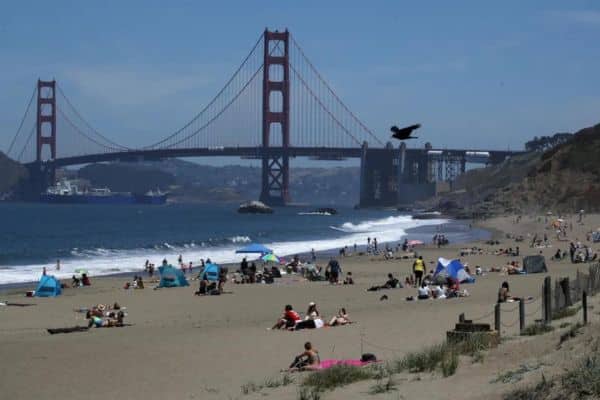What is a Beach Hazard Statement? How to be Safe?

Here’s a breakdown of what a beach hazard statement typically covers:
Hazardous conditions:
The statement will highlight specific hazards like high waves (usually at least 3 to 5 feet tall), strong rip currents, longshore currents, or structural currents.
Affected areas:
The specific beaches or coastline most at risk will be identified.
Timeframe:
The statement will indicate the duration for which the hazardous conditions are expected to persist.
Purpose of a beach hazard statement:
Public awareness:
The main purpose is to raise public awareness about the dangers of swimming in rough surf conditions. This helps people make informed decisions about their beach activities and avoid putting themselves at risk.
What to do when a beach hazard statement is issued:
Avoid swimming: It’s best to stay out of the water altogether, especially for inexperienced swimmers.
Exercise caution on the beach: Be aware of your surroundings and avoid venturing too close to the water’s edge, especially during high tide.
Supervise children closely: Keep a watchful eye on children while they are on the beach.
When beach hazard statement is announced?
Beach hazard statements are typically announced when there is an increased risk of swimming hazards due to rough surf conditions and dangerous currents along the coast. There’s no single trigger for the announcement, but the National Weather Service (NWS) issues them based on a combination of factors:
Wave height: A significant increase in wave height, usually exceeding 3 to 5 feet, is a major concern.
Rip currents: The presence of strong rip currents that can pull swimmers out to sea is a critical factor.
Other dangerous currents: Longshore currents or structural currents that can pose a threat to swimmers are also considered.
Essentially, the NWS prioritizes public safety and will issue a beach hazard statement whenever there’s a significant risk of getting caught in rough surf or strong currents.
Here’s a more detailed breakdown of the timing:
Proactive measure: Beach hazard statements are often issued proactively, a day or two before the hazardous conditions are expected to arrive. This gives people time to be aware of the situation and plan their beach activities accordingly.
Rapid changes: Statements can also be issued closer to real-time if there’s a sudden change in weather conditions that creates a swimming hazard.
How to stay informed:
National Weather Service (NWS) website: You can check the NWS website for your specific location to see if a beach hazard statement is in effect.
Local news and media: Local news channels and radio stations often broadcast beach hazard statements as part of their weather reports.
Beach websites or apps: Many popular beaches have their own websites or apps that will display beach hazard statements.
The Potential states in the united states of america to announce beach hazard statement
Beach hazard statements are most commonly issued for coastal states in the United States that border the Atlantic Ocean, Pacific Ocean, and Gulf of Mexico. These states experience ocean waves and currents that can create hazardous swimming conditions.
Here’s a list of potential states:
Atlantic Ocean:
Maine
New Hampshire
Massachusetts
Rhode Island
Connecticut
New York
New Jersey
Delaware
Maryland
Virginia
North Carolina
South Carolina
Georgia
Florida
Pacific Ocean:
Washington
Oregon
California
Alaska
Hawaii
Gulf of Mexico:
Florida
Alabama
Mississippi
Louisiana
Texas
How to be safe from the beach hazard statement?
When a beach hazard statement is announced, prioritize your safety by following these precautions:
Avoid swimming completely: This is the single most important step. Rough surf and strong currents can overpower even experienced swimmers. If you’re unsure about the conditions, stay out of the water.
Stay alert on the beach:
Maintain a safe distance from the water’s edge: Especially during high tide, avoid venturing too close to the waves.
Supervise children closely: Keep a watchful eye on them at all times, especially if they’re playing in the sand near the water.
Be aware of your surroundings:
Look for warning signs: Beaches often have posted signs that indicate dangerous currents or rip tides. Pay attention to these warnings.
Observe the flags: Lifeguards use colored flags to communicate beach safety conditions. Red flags typically signify dangerous swimming conditions, while yellow flags indicate caution advised. Double-check the flag colors before entering the water.
Seek alternative activities:
Beachcombing: Look for shells and interesting rocks along the shoreline, away from the crashing waves.
Sandcastle building: This is a fun activity that can keep everyone entertained on dry land.
Beach games: Play games like frisbee, volleyball, or soccer further back from the water’s edge.
People-watching: Relax on the beach and enjoy the scenery and people around you.
Additional safety tips:
Never swim alone: Always have a buddy with you when swimming in the ocean, even if conditions seem calm.
If you get caught in a rip current: Don’t fight against the current. Stay calm and swim parallel to the shore until you escape the current’s pull. Then, swim diagonally towards shore.
Wear a life jacket: This can provide extra buoyancy and protection, especially for children or weak swimmers.
Learn basic water safety skills: Consider taking a swimming or water safety course to be better prepared for unexpected situations.